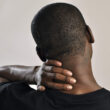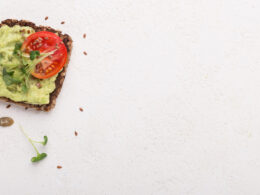Your kids may come home from school this winter with something more worrisome than homework: sniffles, tummy bugs and even (ick!) lice. Now that students are cooped up in overheated classrooms all day, schools can be breeding grounds for any number of ailments.
You probably can’t avoid sick days entirely; according to the American Academy of Pediatrics, the average schoolchild gets 8-12 colds and 1-2 cases of diarrhea in a year, and the Centers for Disease Control reports an estimated 6-12 million head-lice infestations per year among 3-11 year-olds. But there are steps you can take to minimize the risks and keep your whole family healthier, such as washing your hands often, eating right and staying up-to-date on vaccinations. And don’t give in when the kids beg to stay up a little longer: “Getting enough sleep helps your immune system fight off whatever might be coming your way,” advises Rebecca Jaffe, MD, of Wilmington, Delaware, a fellow of the American Academy of Family Physicians.
If you want to know about staying healthy, steering clear of the typical list of school yard sicknesses and the best way to treat them, here are the health facts about five common contagions:
Colds and flu
Cause: Viruses.
Symptoms: Stuffy nose, sneezing, mild sore throat and cough for colds; fever, aches, severe cough for flu.
Spread by: Droplets on hands or released into air by coughs or sneezes.
Prevention: Use a tissue to sneeze, cough or blow your nose; discard immediately and wash hands. Teach kids to sneeze into their elbow if there’s no tissue handy. Don’t share cups, water bottles or utensils.
Treatment: Rest and fluids. Give antihistamines and non-aspirin pain medications for colds; antiviral meds for flu if prescribed by your pediatrician. (Antibiotics are only effective against bacterial infections such as strep throat.)
Gastroenteritis (stomach flu)
Causes: Virus, bacteria or parasites.
Symptoms: Diarrhea, vomiting; may include fever, headache, chills.
Spread by: Contact with infected person or contaminated food or beverages.
Prevention: Frequent hand-washing. Disinfect surfaces your family touches often — doorknobs, keyboards, etc. — as well as the kitchen counter and other areas used for food preparation.
Treatment: Bed rest and an oral rehydration solution to prevent dehydration; gradually give bland foods such as toast, bananas and applesauce. See your pediatrician if your child runs a high fever or if vomiting and diarrhea continues for more than a day. Keep your child home until she’s been symptom-free for 24 hours.
Conjunctivitis (pinkeye)
Causes: Virus, bacteria, allergies.
Symptoms: Reddish eye and lower lid, itching, discharge and painful inflammation.
Spread by: Contact.
Prevention: Wash your child’s hands frequently and warn him not to rub or touch his eyes. Don’t share towels or washcloths.
Treatment: See your pediatrician for a prescription eye ointment.
Infectious skin rashes
Causes: Rashes can be caused by bacteria (impetigo), a virus (fifth disease) or mites (scabies).
Symptoms: Itchy, oozing blisters (impetigo); reddish rash on face and body (fifth); intensely itchy pimple-like rash (scabies).
Spread by: Impetigo and scabies can be spread by touching the infected area or handling the affected child’s towels or clothes; fifth disease is transmitted by saliva and mucus.
Prevention: Frequent hand-washing and use of tissues; avoid sharing towels.
Treatment: Varies by type. For impetigo, your doctor will prescribe antibiotics, antiseptic soap and bandages; for scabies, prescription creams; for fifth disease, acetaminophen or ibuprofen as needed.
Head lice
Cause: Red-brown insects about the size of a sesame seed that live and lay whitish eggs (nits) in human hair. Unpleasant as they are, lice don’t spread disease, and having them doesn’t indicate poor hygiene.
Symptoms: Itchy scalp, especially around the ears or nape of the neck.
Spread: Head-to-head contact.
Prevention: Discourage children from sharing hats, combs and other hair gear. Tie back long hair in braids or ponytails.
Treatment:
Ask your doctor to recommend an anti-lice
shampoo and follow instructions carefully. Use a fine-tooth louse comb daily
for a week to remove any remaining bugs and nits. Wash clothes, hats, bedding
and stuffed animals in hot water and dry on a high setting. Ask your school
nurse when your child can return; some schools have a “no-nit” policy, but the AAP
says there’s no need to keep children home if they have no active lice in







